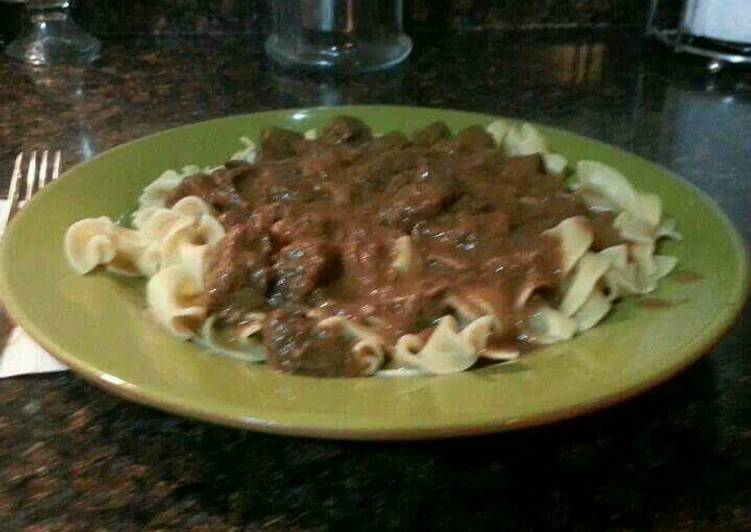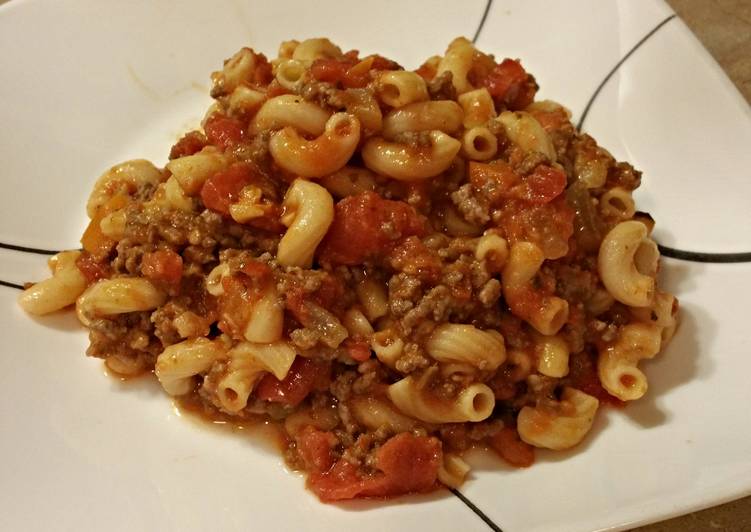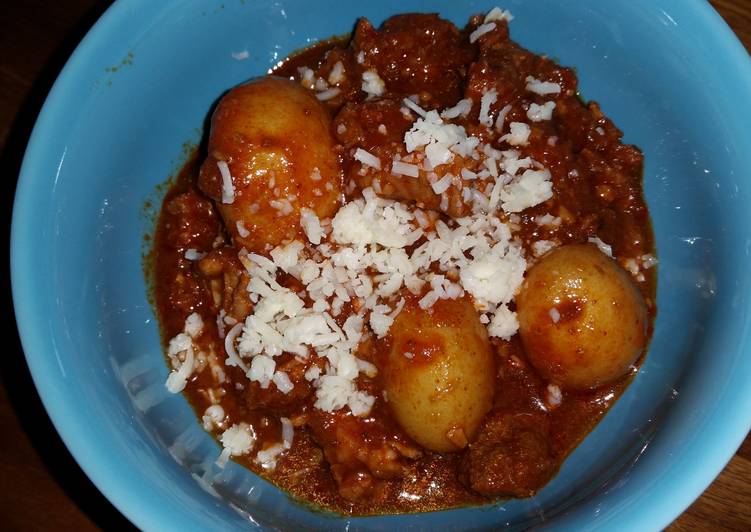
We will present a range of popular recipes that exist in the globe. Naturally the dish that is most searched for by people. Order us, make certain the active ingredients you purchase for cooking are the most effective. Don’t select ingredients that are not fresh.
Healthy and balanced food preparation recipes that we document below, are recipes about Hungarian Goulash with Noodles. This definitely gives a solution for those of you who such as to prepare. Alright, let’s simply take a look at the Hungarian Goulash with Noodles handling method, review this very carefully:
Hi, hope you are having an amazing day today. Today, I will show you a way to prepare a distinctive dish, hungarian goulash with noodles. One of my favorites. For mine, I’m gonna make it a little bit unique. This is gonna smell and look delicious.
Hungarian Goulash with Noodles is one of the most favored of recent trending meals on earth. It’s appreciated by millions daily. It is easy, it’s quick, it tastes delicious. Hungarian Goulash with Noodles is something which I’ve loved my entire life. They’re nice and they look wonderful.
Hungarian Goulash is a stew and soup at the same time. Hungarian pinched noodles called Csipetke and usually used in soups or as a side dish to go with hardy stews and sauces. This Hungarian goulash is zero effort, ALL flavour.
To begin with this particular recipe, we must prepare a few ingredients. You can have hungarian goulash with noodles using 12 ingredients and 7 steps. Here is how you can achieve that.
What needs to be prepared of Hungarian Goulash with Noodles:
- Prepare 2 lb beef, cut into cubes
- Get 4 medium onions, minced/diced
- Make ready 1/2 teaspoon dry mustard
- Prepare 3 teaspoons paprika
- Get 4 tablespoons brown sugar
- Make ready 2 teaspoons salt
- Make ready 6 tablespoons worcestershire sauce
- Take 2 teaspoons apple cider vinegar
- Take 3/4 cup ketchup
- Prepare 3 cups water divided
- Make ready 6 tablespoons flour
- Make ready 1 bag extra-wide egg noodles
From the country's varied culinary repertoire Hungarian goulash is the most famous and often cooked dish outside the borders of Hungary. Traditional Hungarian goulash is a prime example of how a few simple ingredients, cooked properly, can yield an incredible flavor. And no, contrary to popular belief here in the U. S., goulash is NOT made with ground beef or (heaven forbid) macaroni noodles!
Instructions To Make Hungarian Goulash with Noodles:
- Place meat and onions in a large crock-pot.
- In a bowl combine mustard, paprika, brown sugar, and salt.
- Combine Worcestershire sauce, vinegar, ketchup; add to mustard mixture; add to meat; add 2 cups of the water; stir; cover.
- Cook on low for 8-10 hours, or high for 6 hours until meat is tender.
- Blend flour with the remaining cup of water; add to meat mixture; stir until thickened.
- Cook noodles until tender; drain.
- Serve meat mixture over noodles.
Traditional Hungarian goulash is a beef and vegetable dish seasoned with paprika that is usually served over buttered noodles for a hearty, satisfying meal. The amounts of garlic, onions, and especially paprika may seem excessive, but they all melt into an incredibly rich and flavorful pan gravy. I wanted a hungarian goulash recipe that wasn't made with ground beef and was for the slow cooker. This is made with beef and served over egg noodles. Hungarian goulash is similar to a soup or stew, depending on the thickness of your liquids, and usually contains a large amount of paprika.
That’s the recipe for Hungarian Goulash with Noodles. See to it you try it in your home, so that your friend or family have selection in terms of food.
So that’s going to wrap this up for this special food hungarian goulash with noodles recipe. Thanks so much for reading. I’m confident that you can make this at home. There’s gonna be more interesting food in home recipes coming up. Remember to bookmark this page in your browser, and share it to your loved ones, friends and colleague. Thank you for reading. Go on get cooking!

